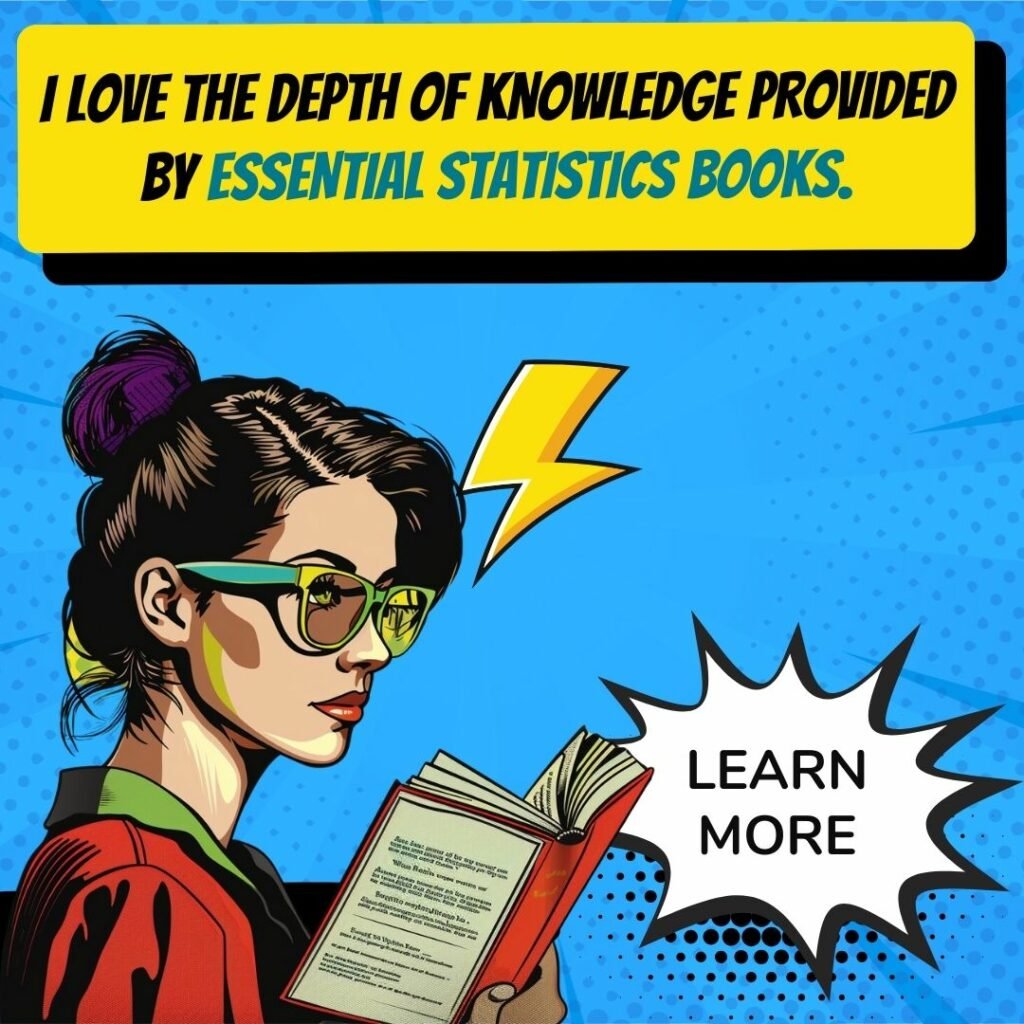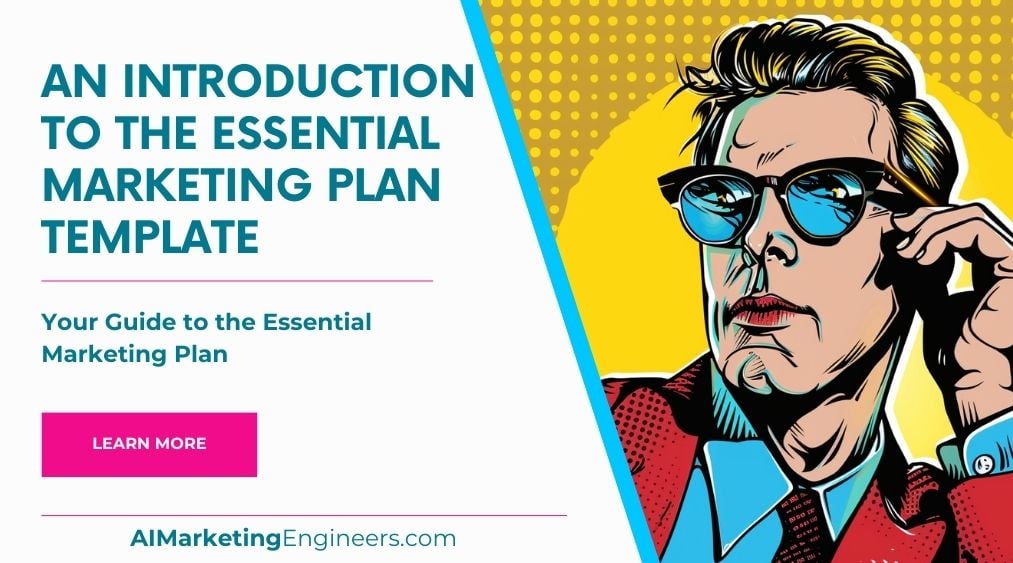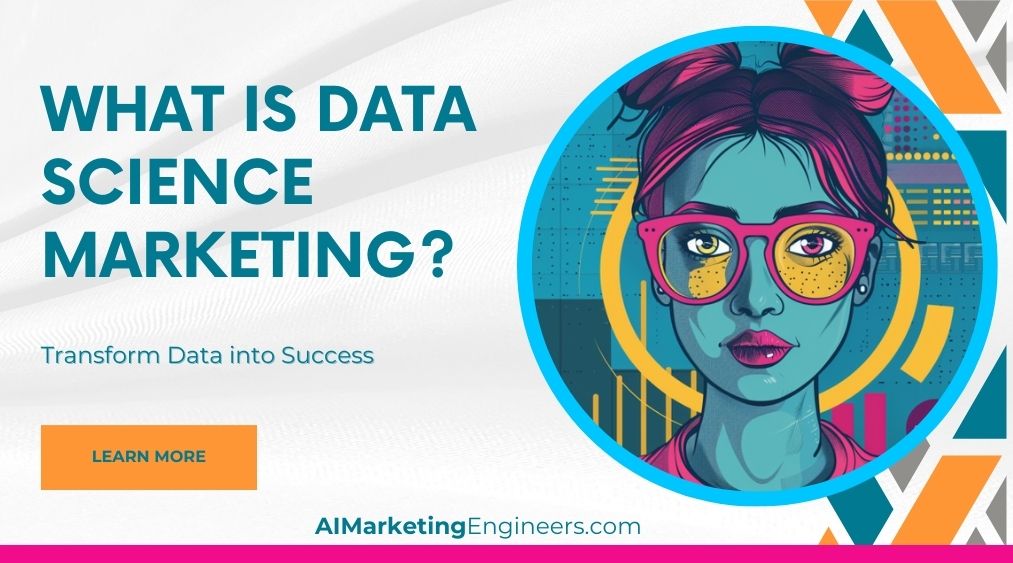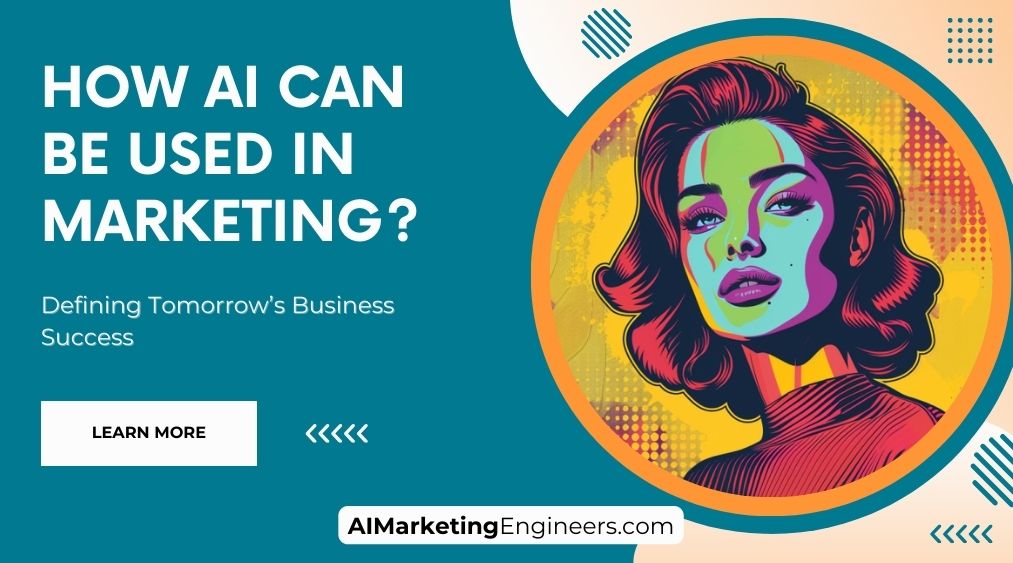Key Takeaways
✅ Fundamental Concepts: Grasp the core pillars of data analysis with books that delve into probability theory, descriptive and inferential statistics, hypothesis testing, and more, equipping you with the foundation for solid decision-making.
✅ Practical Application: From theory to action – these essential reads offer real-life case studies and exercises, bridging the gap between statistical principles and their application in a spectrum of professional settings.
✅ Interactive Learning: Get hands-on with data through interactive exercises and visual aids that foster an engaging learning environment, priming you for a deeper understanding and retention of statistical analysis techniques.

Introduction
How does one navigate the vast seas of data and emerge with actionable insights? Statistics is your lighthouse, guiding the way through the fog of information overload. But where do you acquire the tools to interpret the signals amidst the noise? Essential statistics books are the compass to your journey, leading you to mastery in data analysis and interpretation.
As the world shifts towards a data-driven axis, the power harnessed from understanding statistical principles can catapult careers and enhance business strategies. Whether you’re parched for new knowledge or thirsting to refine your expertise, we throw a spotlight on a wellspring of resources that can quench this desire. Exploring topics from the basics to Bayesian methods, regression analysis to time series forecasting, these essential statistics books have anchored their place in the libraries of data enthusiasts and professionals alike.
Join us as we unveil publications that not only teach, but transform you into a connoisseur of data, where you’ll unlock modern approaches and innovative solutions for the economy of tomorrow. This article promises a treasure trove of actionable insights and cutting-edge information, placing the keys to data analysis superiority firmly in your hands. Ready to elevate your statistical prowess? Let’s turn the page.
Top Statistics
| Statistic | Insight |
|---|---|
| Global Book Publishing Revenue: Reached $98 billion in 2020, with an estimated growth of 3% in 2021. (Source: Statista) | This impressive revenue benchmark underlines the vital role of publishing, signaling a lucrative market for authors and educators in the analytics education sector. |
| Academic & Professional Segment Growth: Grew by 5.7% in 2020, reaching $14.6 billion in sales. (Source: Publishers Weekly) | The surge in this sector represents a growing acknowledgment of the need for specialized educational material, especially essential statistics books for professional development. |
| STEM Degrees: Increased by over 45% from 2010-2016. (Source: U.S. Department of Commerce) | The steady climb in STEM education directly parallels the demand for comprehensive statistics books, as students and professionals alike seek mastery in data analytics. |
| eBook Sales Projections: The eBook market is forecasted to reach $21.68 billion by 2027, with a 4.7% CAGR. (Source: Business Wire) | Ebook sales are not just a trend but a mainstay, underscoring the potential for digital transformation within the realm of academic book publishing. |
| Online Learning Platforms: Predicted to grow at a CAGR of 17.2% from 2021-2027. (Source: ResearchAndMarkets) | As learning modalities shift online, there’s incredible room for growth in integrating innovative teaching tools with traditional statistics texts. |
The Foundations of Statistics
Let's start with the basics. Descriptive statistics is all about summarizing and describing the data you've collected. Things like measures of central tendency (mean, median, mode) and measures of dispersion (range, variance, standard deviation) are crucial in understanding the distribution and characteristics of your data.
On the other hand, inferential statistics involve using probability, sampling, and hypothesis testing to draw conclusions about a larger population based on the data you have. These concepts are the foundation for making informed decisions and drawing meaningful insights from your analyses.
Essential Statistics Books for Mastering Data Analysis
When it comes to must-read statistics books, a few stand out from the crowd. "Introduction to the Practice of Statistics" by David S. Moore, George P. McCabe, and Bruce A. Craig is a comprehensive resource that covers statistical concepts and methods in a way that emphasizes practical applications and real-world examples. It's an excellent choice for anyone looking to build a strong statistical foundation.
For those seeking a deeper dive into statistical theory and inference, "Statistical Inference" by George Casella and Roger L. Berger is a go-to resource. This book is particularly well-suited for advanced students and researchers who want to really understand the underlying principles and mathematical foundations of statistical analysis.
If you're more interested in the business and decision-making side of statistics, "Data Analysis and Decision Making" by S. Christian Albright, Wayne L. Winston, and Christopher Zappe might be the book for you. It focuses on using statistical techniques and spreadsheet modeling to drive data-driven decision-making in the corporate world.
Mastering Data Interpretation
Effective data visualization is a crucial skill for anyone working with statistics. Choosing the right charts and graphs to present your data can make all the difference in communicating your findings clearly and convincingly. Understanding the principles of data visualization design, such as color choice, layout, and labeling, can help you create visuals that are both informative and visually appealing.
Beyond just presenting the data, being able to interpret and communicate statistical findings is equally important. Knowing how to translate complex statistical concepts into language that non-technical audiences can understand is a valuable skill. Storytelling with data can help you engage your audience and make a lasting impact with your analysis.
Applying Statistics in Real-World Contexts
Statistics isn't just about numbers and formulas; it's about making sense of the world around us. Whether you're in business, the social sciences, healthcare, or engineering, the practical application of statistical methods can be a game-changer.
By exploring real-world case studies and examples from various industries, you'll see how statistical principles can be applied to solve problems, make informed decisions, and drive innovation. These hands-on experiences can help you better understand the relevance and importance of statistics in your own field of work or study.
Inspirational Quotes
1. “Data is the new oil.” – Clive Humby
This insightful quote by Clive Humby serves as a powerful reminder of the unparalleled value that data holds in the contemporary digital economy. Data is not just an asset; it’s the lifeblood that powers decision-making, drives innovation, and fuels the strategic engines of today’s businesses. Embrace this reality, and let it propel you to new heights of success.
2. “Without big data analytics, companies are blind and deaf, wandering out onto the web like deer on a freeway.” – Geoffrey Moore
Jeffrey Moore’s vivid imagery spotlights the peril of ignoring the significance of data analytics. In an online ecosystem teeming with opportunities and hazards, big data analytics serve as your company’s eyes and ears, ensuring you’re sprinting down the path to prosperity, not the highway to obsolescence. Harness those analytics, and steer your business with precision.
3. “Everything should be made as simple as possible, but not simpler.” – Albert Einstein
Einstein’s legendary words convey a deep wisdom critical to those who delve into the world of data. Simplification is the gateway to understanding, but tread carefully – oversimplification can distort the truth. Aim for clarity infused with accuracy, and let it be your guide in communicating the intricate stories told by your data.
AI Marketing Engineers Recommendation
Recommendation 1: Dive into Data-Driven Decision Making with “Essential Statistics Books”: Leverage insights from Essential Statistics Books: Mastering Data Analysis and Interpretation to substantiate your e-commerce strategies. In an age where 2.5 quintillion bytes of data are generated daily, those who can parse through this information hold power. Use this statistical knowledge to analyze customer behavior patterns, predict market trends, and make informed decisions that could yield a 5-6% increase in productivity, according to a report by the MIT Center for Digital Business.
Recommendation 2: Foster a Culture of Continuous Learning and Improvement Utilizing Essential Statistics Wisdom: The e-commerce landscape is constantly evolving. To stay ahead, foster a culture within your organization that values the ongoing learning provided by materials such as Essential Statistics Books. A report from McKinsey Global Institute found that data-driven organizations are 23 times more likely to acquire customers. Embrace this strategic approach by hosting workshops and developing training modules based on the book’s content to empower your team with the statistical acumen needed to anticipate market shifts and dynamically adapt marketing strategies.
Recommendation 3: Integrate Advanced Analytical Tools Endorsed by Essential Statistics Experts: Adopt advanced analytical tools such as Google Analytics, Tableau, or Python’s statistical packages, which align with the methodologies taught in Essential Statistics Books. With 97.2% of leading companies investing in big data and AI, according to NewVantage Partners, integrating these tools can enhance your ability to gather, analyze, and interpret vast amounts of data. Use this synergy to unlock predictive insights, optimize customer journeys, and drive e-commerce innovation, ultimately setting you apart as a leader in your industry sector.
Conclusion
In the data-driven world we navigate today, mastering data analysis and interpretation is akin to mastering the language of future innovation and business success. Each page turned within the recommended essential statistics books is a step forward in translating raw numbers into strategic insights. As we’ve explored, from the foundational bedrock of probability and distributions through the intricacies of regression and the predictive prowess of advanced statistical models, these books provide the resources to elevate your analytic prowess.
Whether you’re new to the game or seeking to deepen your expertise, there’s a treasure trove waiting in these pages. Equip yourself with the robust tools found in these carefully selected texts—the knowledge within empowers you to make informed decisions, uncover hidden trends, and craft stories from datasets that could redefine your industry. Remember, data analysis isn’t merely about interpretation; it’s about weaving accuracy with creativity to breathe life into numbers.
For professionals and enthusiasts alike, picking up these stat-packed tomes can be the catalyst for becoming a data virtuoso. In the spirit of constant learning and improvement, challenge yourself to peer beyond the figures, to ask bolder questions, and to seek out the narratives that are waiting to be discovered. Harness the potential that statistical literacy brings, and watch as doors to untold opportunities swing wide open. Embrace this journey, for through these books lies the path to not just understanding data but mastering the very currency of our digital age.
FAQs
Question 1: What are some recommended essential statistics books for beginners?
Answer: Recommended books for beginners include “Statistics For Dummies” by Deborah Rumsey, “Head First Statistics” by Dawn Griffiths, and “Introductory Statistics” by Thomas K. Tiemann.
Question 2: Which books should I read if I want to master data analysis and interpretation?
Answer: To master data analysis and interpretation, consider reading “The Art of Statistics: How to Learn from Data” by David Spiegelhalter, “Data Science for Business” by Foster Provost & Tom Fawcett, and “An Introduction to Statistical Learning: With Applications in R” by Gareth James, Daniela Witten, Trevor Hastie, and Robert Tibshirani.
Question 3: Are there any books focused on visualization techniques for better data presentation?
Answer: For visualization techniques, look at “Storytelling with Data” by Cole Nussbaumer Knaflic and “The Visual Display of Quantitative Information” by Edward Tufte.
Question 4: Can you suggest some books covering advanced statistical methods?
Answer: Books that cover advanced statistical methods include “Applied Linear Regression Models” by Michael Kutner et al. and “Elements of Statistical Learning” by Trevor Hastie et al.
Question 5: Is there a book that combines both theoretical understanding and practical applications?
Answer: “All of Statistics: A Concise Course in Statistical Inference” by Larry Wasserman combines theoretical knowledge with practical examples.
Question 6: What books can help me learn programming languages like Python or R for statistical analysis?
Answer: To learn Python, consider “Python Crash Course” by Eric Matthes. For R, “R for Data Science” by Hadley Wickham and Garrett Grolemund is recommended.
Question 7: Do these books offer guidance on effective communication of statistical findings?
Answer: Yes, for guidance on communicating data, check out “Effective Data Visualization” by Stephanie D. H. Evergreen.
Question 8: Will reading these books prepare me for professional certifications or exams related to data analysis and statistics?
Answer: These books will enhance your knowledge and skills, which could be beneficial for professional certifications or exams.
Question 9: Where can I find additional resources, such as online courses or tutorials, to supplement my learning from these books?
Answer: Additional resources can be found on platforms like Coursera, edX, Udemy, and YouTube, which offer relevant courses and tutorials.
Question 10: Can you recommend any books that focus on specific domains within statistics, such as machine learning or Bayesian inference?
Answer: For machine learning, “Hands-On Machine Learning with Scikit-Learn, Keras, and TensorFlow” by Aurélien Géron is a great choice. For Bayesian inference, “Bayesian Data Analysis” by Andrew Gelman et al. is recommended.
Academic References
- Lavine, M. (2018). Introduction to Statistical Thinking. 3rd ed. CRC Press, ISBN: 9781498765016. In this insightful text, Lavine brings forth an approach that centers on conceptual reasoning rather than the mere memorization of formulas. Through engaging real-world examples and thought-provoking case studies, readers gain the ability to apply a practical analytical lens to data, fostering the critical skill of problem-solving in a statistical context.
- Salkind, N. J. (2017). Statistics for People Who (Think They) Hate Statistics. 6th ed. SAGE Publications, Inc., ISBN: 9781506336852. Salkind eases learners into the intricacies of statistics by dispelling the intimidation factor so often associated with the subject. His approachable writing style, integrated with exercises and quizzes, demystifies complex concepts, making the subject matter significantly more palatable for those who have traditionally viewed statistics with apprehension.
- Spiegelhalter, D. (2019). The Art of Statistics: How to Learn from Data. Basic Books, ISBN: 9780465097097. Spiegelhalter masterfully blends theoretical and practical elements to guide readers in the critical evaluation of data. Providing insights into the common missteps of data interpretation and emphasizing the importance of clear statistical communication, this book stands as a bridge connecting abstract statistical theory to tangible, real-world application.













